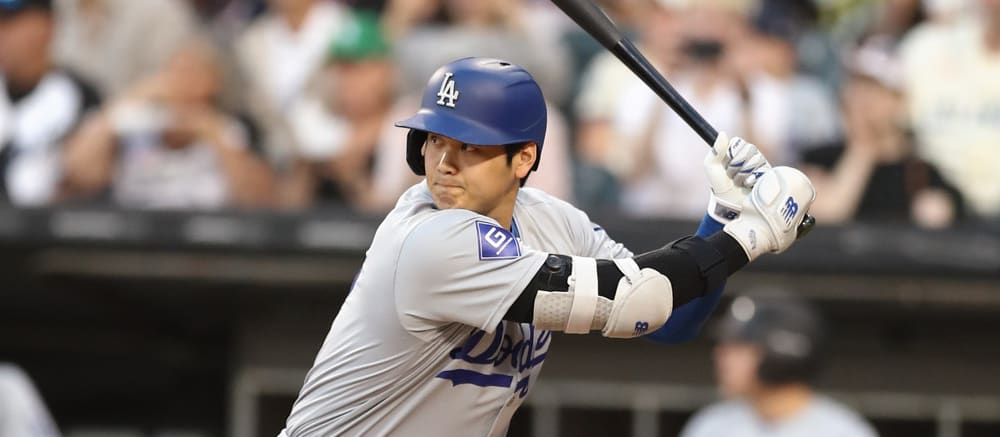If your first half didn't go so well, and you're not ready (or inclined) to dive into fantasy football, DraftKings has just what you need: a second-half best ball contest. They're available at a few different price points with overall prizes up to $100,000 ($20 per entry). There is a lower entry version ($4 per team) with a $25,000 top prize. There are even $1 entries where it's winner-take-all.
Regardless of the format, the rosters and scoring are the same. Each team drafts 20 players, with nine making each weekly active lineup: three infielders, three outfielders and three pitchers. Each player is assigned one position.
Scoring is as follows:
Hitters
- Single: 3 points
- Double: 5 points
- Triple: 8 points
- Home Run: 10 points
- RBI: 2 points
- Run: 2 points
- Walk: 2 points
- HBP: 2 points
- Stolen Base: 5 points
Pitchers
- Inning Pitched: 2.25 points
- Strikeout: 2 points
- Win: 4 points
- Earned Run: -2 points
- Hit: -.6 points
- Walk: -.6 points
- HBP: -.6 points
- Complete Game: 2.5 points
- Complete Game Shutout: 2.5 points
Best ball contests are designed for multi-entries, which lessens the utility of rankings. That encourages embracing variance and designing a series of rosters to cover the most likely scenarios. For instance, you want to have different rosters stacked with the top offenses. Of course, other competitors have the same plan, so the ability to pull it off requires a fortuitous draft spot and ignoring ADP to get multiple players from the same team. Another approach is to focus
If your first half didn't go so well, and you're not ready (or inclined) to dive into fantasy football, DraftKings has just what you need: a second-half best ball contest. They're available at a few different price points with overall prizes up to $100,000 ($20 per entry). There is a lower entry version ($4 per team) with a $25,000 top prize. There are even $1 entries where it's winner-take-all.
Regardless of the format, the rosters and scoring are the same. Each team drafts 20 players, with nine making each weekly active lineup: three infielders, three outfielders and three pitchers. Each player is assigned one position.
Scoring is as follows:
Hitters
- Single: 3 points
- Double: 5 points
- Triple: 8 points
- Home Run: 10 points
- RBI: 2 points
- Run: 2 points
- Walk: 2 points
- HBP: 2 points
- Stolen Base: 5 points
Pitchers
- Inning Pitched: 2.25 points
- Strikeout: 2 points
- Win: 4 points
- Earned Run: -2 points
- Hit: -.6 points
- Walk: -.6 points
- HBP: -.6 points
- Complete Game: 2.5 points
- Complete Game Shutout: 2.5 points
Best ball contests are designed for multi-entries, which lessens the utility of rankings. That encourages embracing variance and designing a series of rosters to cover the most likely scenarios. For instance, you want to have different rosters stacked with the top offenses. Of course, other competitors have the same plan, so the ability to pull it off requires a fortuitous draft spot and ignoring ADP to get multiple players from the same team. Another approach is to focus on the best players from the second-tier lineups, since it will be easier to roster more of the better hitters from these teams.
The following rankings are a combination of rest-of-season projections (which factor in potential loss of playing time) with assigning everyone the same playing time and ranking just on skills.
Please note, these leagues have been drafting for awhile, so the ADP does not reflect all of the factors going into the rankings. An example is how long it has taken for Kyle Tucker to return from his calf contusion.
Good luck, and if you see ToddZ in your draft room, go easy on him. He could use something to root for down the stretch.






































